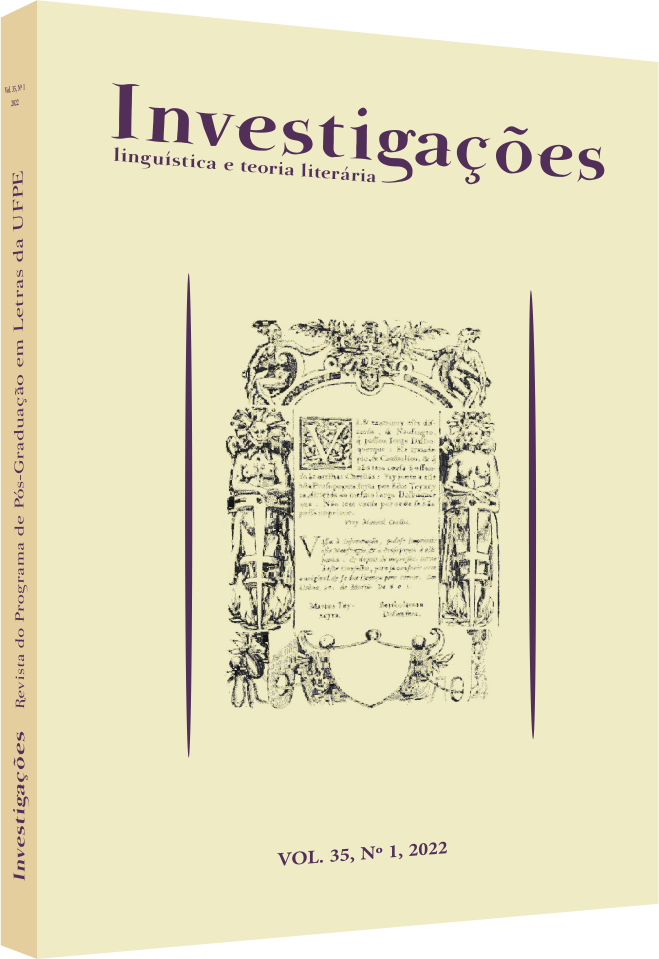O regido e o liberto: esmaltes de um mosaico rosiano
DOI:
https://doi.org/10.51359/2175-294x.2022.254244Keywords:
literary creation, self-conscious fiction, Tutaméia, João Guimarães Rosa.Abstract
This academic paper will discuss the concepts of literary creation and self-conscious fiction related to the poetics of João Guimarães Rosa. For this study, our corpus will be three texts from the book Tutaméia(1967): beside the preface “Sobre a escova e a dúvida”, we will analyze the short stories “Se eu fosse personagem” and “Três homens e o boi dos três homens que inventaram o boi”. Our theoretical debate will be based mainly on some reflections developted by Robert Alter (on self-conscious fiction) and George Steiner (on some notions of literary creation).References
ALTER, Robert. Partial Magic:the novel as a self-conscious genre.Berkeley: University of California Press, 1975.
ALTER, Robert. Em espelho crítico. São Paulo: Editora Perspectiva, 1998.
CERVANTES, Miguel de.Dom Quixote (volume 1). São Paulo: PenguinClassics Companhia das Letras, 2012.
COUTINHO, Eduardo F. (org.). Guimarães Rosa: Coleção Fortuna Crítica vol. 6. Rio de Janeiro: Civilização Brasileira, 1983.
FRYE, Northrop. CreationandRecreation. Toronto: University of Toronto Press, 1980.
JOYCE, James. Ulysses.São Paulo: PenguinClassics Companhia das Letras, 2012.
ROSA, João Guimarães. Tutaméia(Terceiras Estórias). Rio de Janeiro: José Olympio Editora, 1967.
STEINER, George. Gramáticas da criação. São Paulo: Globo, 2003
ZWEIG, Stefan. Autobiografia: o mundo de ontem. Rio de Janeiro: José Zahar Editor, 2014.
Downloads
Published
How to Cite
Issue
Section
License
Copyright (c) 2022 Maria Larissa Farias Ferreira

This work is licensed under a Creative Commons Attribution 4.0 International License.
Authors who publish with Revista Investigações agree to the following terms:
Authors retain copyright and grant the journal right of first publication with the work simultaneously licensed under the Creative Commons Attribution 4.0 International (CC BY 4.0) license that allows others to share the work with an acknowledgement of the work's authorship and initial publication in this journal.
Authors are able to enter into separate, additional contractual arrangements for the non-exclusive distribution of the journal's published version of the work (e.g., post it to an institutional repository or publish it in a book), with an acknowledgement of its initial publication in this journal.
You are free to:
Share — copy and redistribute the material in any medium or format for any purpose, even commercially.
Adapt — remix, transform, and build upon the material for any purpose, even commercially.
The licensor cannot revoke these freedoms as long as you follow the license terms.
Under the following terms:
Attribution — You must give appropriate credit , provide a link to the license, and indicate if changes were made . You may do so in any reasonable manner, but not in any way that suggests the licensor endorses you or your use.
No additional restrictions — You may not apply legal terms or technological measures that legally restrict others from doing anything the license permits.

